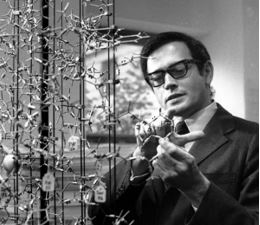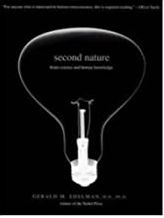|
TRANSLATE THIS ARTICLE
Integral World: Exploring Theories of Everything
An independent forum for a critical discussion of the integral philosophy of Ken Wilber
 David Christopher Lane, Ph.D.
Professor of Philosophy, Mt. San Antonio College Lecturer in Religious Studies, California State University, Long Beach Author of Exposing Cults: When the Skeptical Mind Confronts the Mystical (New York and London: Garland Publishers, 1994) and The Radhasoami Tradition: A Critical History of Guru Succession (New York and London: Garland Publishers, 1992). David Christopher Lane, Ph.D.
Professor of Philosophy, Mt. San Antonio College Lecturer in Religious Studies, California State University, Long Beach Author of Exposing Cults: When the Skeptical Mind Confronts the Mystical (New York and London: Garland Publishers, 1994) and The Radhasoami Tradition: A Critical History of Guru Succession (New York and London: Garland Publishers, 1992).
THE STUDY OF CONSCIOUSNESS
Glimpses into the Life and Work of Great Thinkers in Neuroscience and Philosophy
Chalmers |
Changeux |
Chomsky |
Churchland, Paul |
Churchland, Patricia |
Crick |
Dennett |
Edelman |
Flanagan |
Humphrey |
Huxley |
Koch |
Leary |
Lilly |
McKenna |
Nagel |
Tononi
Gerald EdelmanGavin LeeGerald Edelman was born on July 1st, 1929. During his early adolescence, Edelman focused on his musical talents and trained to become a concert violinist. Despite the fact that the advancement of science wasn't his first passion, he would later pursue a career in the sciences and forever change every field he was involved with. Edelman's education consisted of an M.D from the Medical School of the University of Pennsylvania and a Ph.D. which he would later obtained at Rockefeller University. After receiving his M.D, Edelman spent some time in the U.S Army Medical Corps as a Captain. While serving, he was sent overseas and practiced general medicine in France for about two years. Upon his discharge and return home, he continued his education at the Rockefeller University pursuing a Ph.D. During this time, he met his first mentor Dr. Henry G. Kunkel, and began researching immunology. After graduating, Edelman decided to stay with the University and was promoted from an Associate Dean to a Vincent Astor Distinguished Professor. As a professor at Rockefeller University, Edelman conducted groundbreaking work into antibodies. His research produced an accurate model of what antibodies looked like and their respective functions. Edelman's team completed a detailed structure, which contained over 1300 amino acids and allowed the team to correctly identify where antigen binding occurred. In 1972, Edelman was awarded the Nobel Prize for his pioneering work.  Gerald Edelman Although Edelman's accomplishment was indeed revolutionary, he later turned his sights on the study of the human mind. Edelman didn't believe that any other branch of science aside from neurology could explain consciousness. Published in 1978, A Mindful Brain, described Edelman's theory of consciousness, “Neural Darwinism.” According to his theory, the neurons are affected by the growth of an individual and the experiences which occur throughout their life; thus, no two people can have the same patterns of neurons. These neurons branch off in groups, neural maps, which tend to fire signals together creating brain activity. Through constant use or disuse of these neurons, they become more experienced and established. Edelman describes the process as an evolution of the human mind, in which groups and patterns of neurons which provide no use are removed. Referring back to his immunology background, Edelman describes how the human body has large amounts of antibodies which at times may randomly link to a foreign substance. This is what allows the human body to create antibodies at such an extremely quick rate when it is challenged by something it has never faced before. Similarly, the brain has neurons which link with what it witnesses and creates connections, allowing the brain to recognize objects in the world with the limited information it holds.
Edelman's theory of consciousness is heavily opposed to the brain acting like a computer, but oddly relies on the functions of a computer to support and describe his hypothesis. However, Edelman's belief that the human brain isn't like a computer comes from two seemingly logical arguments he makes. First, each human brain is individually wired up in such different ways that the human brain being a computer doesn't make sense. Second, reality is not something fed to the brain in an orderly fashion. Edelman believes that the brain has a unique feature known as degeneracy making it different from a computer. Degeneracy is essentially stating that the same level of output can be reached through different processes. Edelman's unique approach when it comes to the brain is what allowed him to formulate his theory. While simultaneously accepting the comments of his critics and researching further into the subject, Edelman was capable of better understanding why this question has stumped scientists for the longest time. Edelman's answer to consciousness has even received the attention of Nobel Laureate Francis Crick. While discussing Edelman's theory of consciousness, Crick once referred to Edelman's “Neural Darwinism” as a theory which should be instead renamed “Neural Edelmanism.” Crick's idea of consciousness was different than that of Edelman, but both showed promising work on a question which still remains unanswered even to this day. The clashes of ideas from Crick and Edelman allowed for both scientists to further their own hypotheses in search of the correct answer. Edelman was a man not focused on his own economic or social status, but rather focused on benefitting society as much as he could in the short amount of time he was afforded. Edelman demonstrated this through his actions and in particular the institution which he founded. The Neurosciences Institute was founded in 1981 and provided a way for real science to be conducted. With one goal in mind, Edelman was able to create a haven, in which scientists were able to focus on their passion instead of external factors which would otherwise affect their work. Suddenly the bureaucracy involved with research conducted by scientists was removed, and meaningful work could be conducted. Neuroscientists lucky enough to be part of the institute were granted a rare opportunity in which they could explore theoretical and experimental hypotheses. Unfortunately, however, as time progressed growing financial issues made it more and more difficult to keep the dream real. In 2012, the Neurosciences Institute was forced to vacate their complex in San Diego and their programs were shutdown. Edelman passed away on May 17, 2014. Further Reading1. Second Nature: Brain Science and Human Knowledge, Yale University Press; 1 edition (October 30, 2007) 2. Neural Darwinism: The Theory Of Neuronal Group Selection, Basic Books; New Ed edition (December 6, 1987) 3. Wider than the Sky: The Phenomenal Gift of Consciousness, Yale University Press; 1st edition (March 10, 2004)    MSAC PHILOSOPHY GROUP
Human interest in the nature of consciousness dates far back to our ancestral past. However, it is only in the last century or so that researchers and philosophers have been able to tackle the problem in a more scientific way. This is primarily due to our increasing understanding of human physiology and how our brain functions. With the advent of ever more sophisticated technology—from fMRI scans, functional magnetic resonance imaging, to DARPA's neural engineering program, understanding neural “dust”—we are now able to not only create vivid simulations of cerebral activity but also to systematically reverse engineer the brain. Whether such empirical observations will unlock the secrets of self-reflective awareness is still open to vigorous debate. Nevertheless, the study of consciousness is now considered to be of elemental importance and has invited a large number of brilliant thinkers— from a wide range of disciplines, including mathematicians, quantum physicists, neuroscientists, and philosophers—to join in the discussions and offer their own contributions.
The following essays briefly explore the life and work of pioneers in the field of consciousness studies. Included in this eclectic mix are such notables as Giulio Tononi (University of Wisconsin), Paul and Patricia Churchland (University of California, San Diego), Noam Chomsky (M.I.T.), the late Timothy Leary and Terence McKenna, and Jean Pierre Changeux (Collége de France) among others.
Comment Form is loading comments...
|